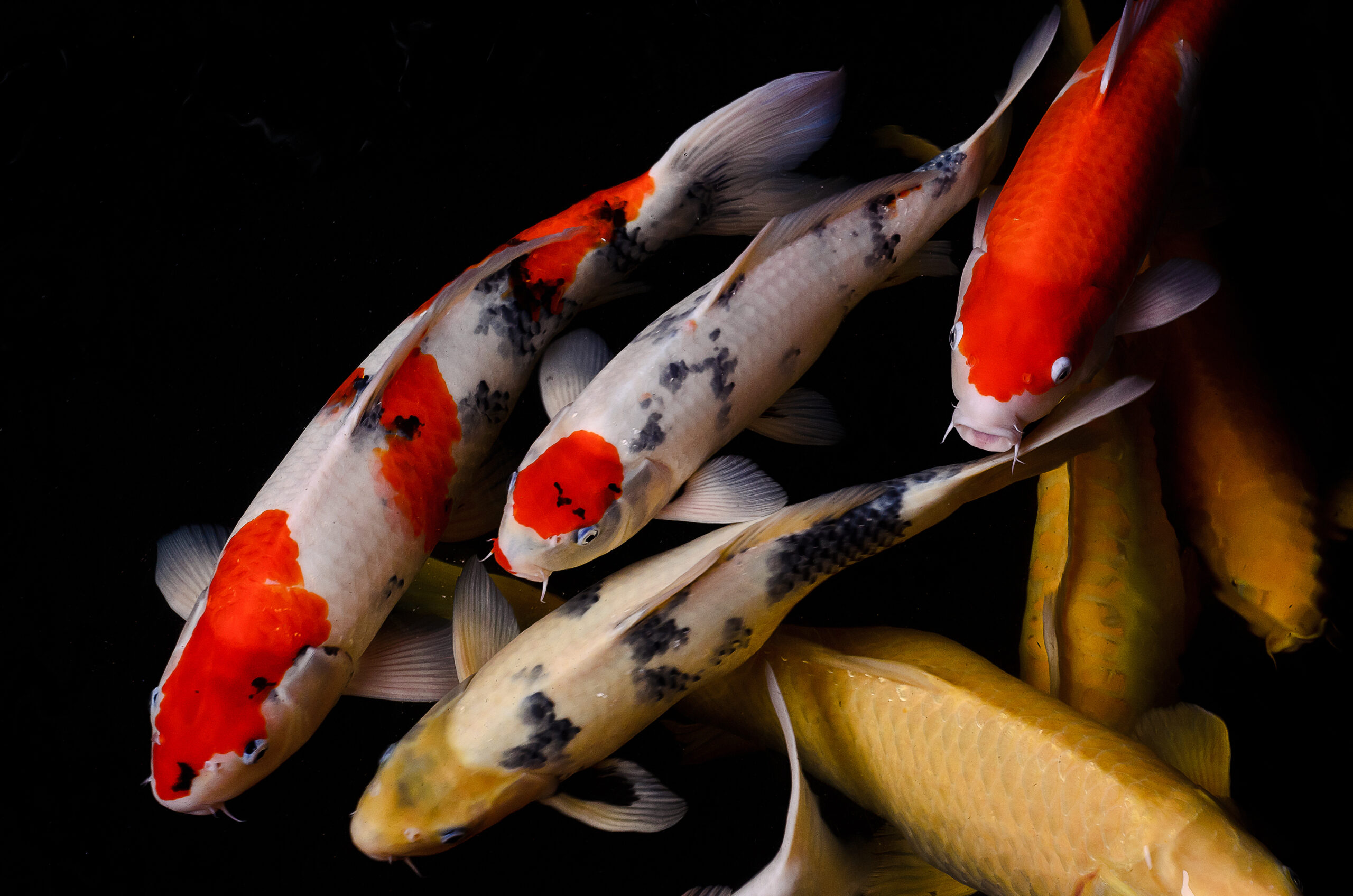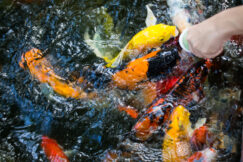Koi fish are known for their bright and beautiful colors, but did you know that they can change color?
In this blog post, we’ll explore the science behind why koi fish can change colors and discuss how to care for them so that they stay vibrant.
Can Koi Fish Change Colors?
Koi fish have been around for centuries and have captivated people with their vibrant colors and beautiful patterns. Their ability to change colors has made them even more popular, allowing owners to observe the changes in their fish over time.
Koi color genetics play a major role in their color changes and variations, and understanding this can help owners better identify and appreciate the different colors of koi.
Additionally, age, diet, and other factors can affect the color of koi, giving owners more control over the appearance of their fish. Knowing these factors can help owners create an optimal environment for their fish to thrive and show off their best colors.
Factors That Affect Color Change
Various factors can influence the color of koi, from genetics to water quality and diet.
Koi Color Genetics
Koi color genetics play an important role in determining the colors and patterns a koi can have. Different varieties of koi can exhibit different color traits and patterns determined by their genetics.
It’s important to understand these genetics when selecting a koi to ensure you get the desired color and pattern. Variations between individual fish are common, even within the same variety, so it’s important to select your koi based on its traits rather than relying solely on the variety name to determine color.
Genetics also significantly influence how much a koi can change in color and pattern over time.
Age and Color Change
Koi fish can change color as they age; this process is natural and healthy. For some varieties, you may see small changes in coloring from juvenile to adulthood. Koi are known for their vibrant colors; at their peak coloration, they are usually around two years old.
As they age, their colorings may fade if they are not from a good gene pool. This is why it is important to do research when choosing koi for your tank – you want to ensure you are getting the best variety of koi with the most vibrant colors possible.
Diet and Color Change
Koi fish can also change color due to their diet. A healthy diet with vitamins and minerals is essential to keep their colors vibrant. If a koi is lacking in certain vitamins or minerals, it could result in a color change.
This can be easily prevented by ensuring that your koi is well-fed and has access to a balanced diet. Certain foods, such as spirulina and shrimp, can also help to enhance a koi’s color. Also, keep your koi’s water clean and free from toxins, which can affect their colors’ vibrancy.
Identifying Color Variations

Identifying color variations in koi fish can be a tricky proposition. The variations can be subtle, and even experienced koi keepers may find it difficult to spot the differences between two similar-looking koi.
To identify color variations, it is important to understand the different types of koi and their associated colors. It is also important to pay close attention to the fish’s scales and patterns. Looking closely at the scales and patterns of the fish can help identify differences in coloration due to age or genetics.
Lastly, a good understanding of the environmental factors influencing a koi’s color can also help spot color variations. With some patience and observation, it is possible to spot the unique color variations in koi fish.
Koi Color Variations
Koi come in various colors and patterns, from white to lavender. While koi can not completely change colors, their colors can fade or become more intense over time. There are a few types of koi color variations that are commonly seen in the pond; these are the Kumonryu, Asagi, Kohaku, and Sanke.
- The Kumonryu is a type of koi with a unique pattern of black and white patches that can change slightly over time.
- Asagi is a blue-colored fish with red spots, and Kohaku is a white fish with red markings.
- The Sanke is a combination of the Kohaku and Asagi, with a white body with red spots and streaks on its back.
Each koi type has its unique coloration that can change over time due to environmental factors such as water temperature, light exposure, and diet.
The Kumonryu

The Kumonryu is a unique variety of koi fish that is particularly notable for its ability to change colors. This type of koi can have a black-and-white or red-and-white combination of colors.
While the color isn’t a reliable indicator of the fish’s age, it can indicate that it’s undergoing a color change. When a Beni Kumonryu’s color changes, the area turns a blue/greyish color. It’s important to keep an eye on the symmetry between the fish’s red, black, and white to ensure it looks its best during this transition period.
Common Types of Koi Color Changes
Koi fish can change color in various ways, from subtle hue shifts to more drastic shade changes. Some of the most common types of color shifts include fading, darkening, and lightning.
Fading occurs when the koi’s existing colors become duller, while darkening and lightening happen when the overall color intensity changes. Some koi may also exhibit a pattern change, such as spots, stripes, or patches appearing or disappearing.
Ultimately, the color changes that a koi experiences will depend on its genetics and environment.
Conclusion
In conclusion, koi fish can change color in a variety of ways. This color change is due to genetics, age, and exposure to sunlight. Different koi varieties tend to develop different colors over time.
While some koi may lose their color as they age, others may become more vibrant. Diet and water temperature can also affect the color of a koi fish. By observing the changes in their color, koi owners can better understand their beloved pet’s health and life cycle.




